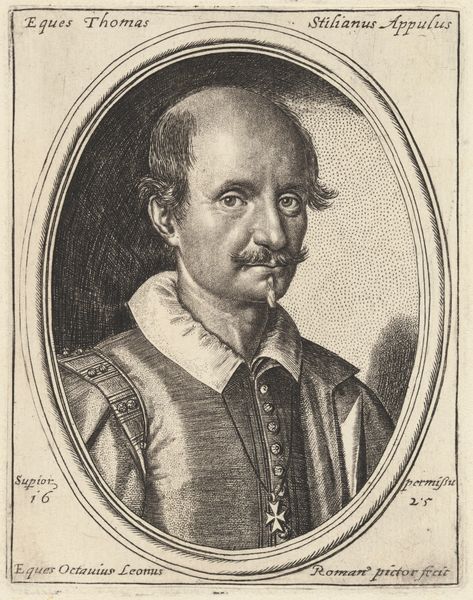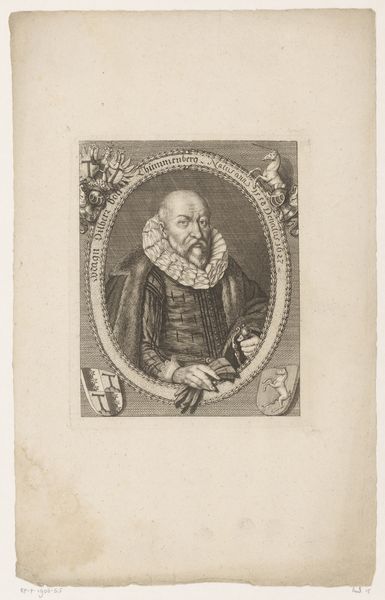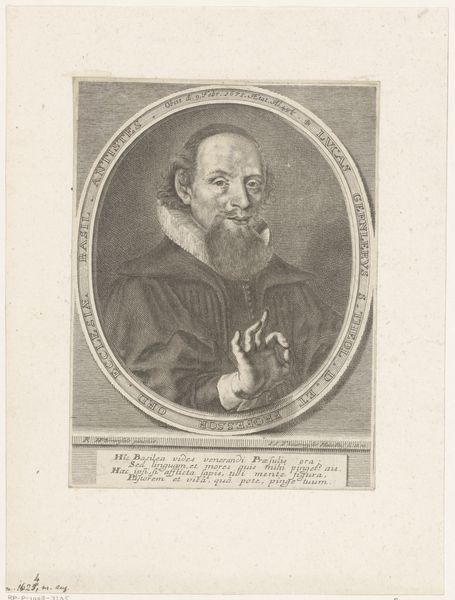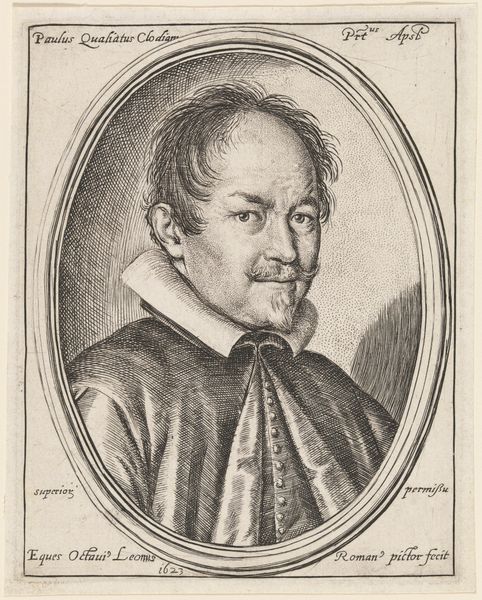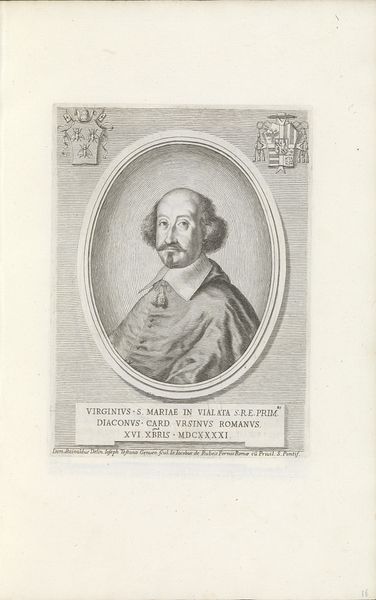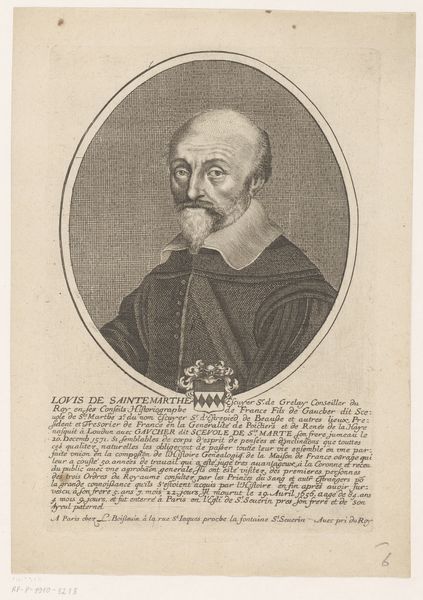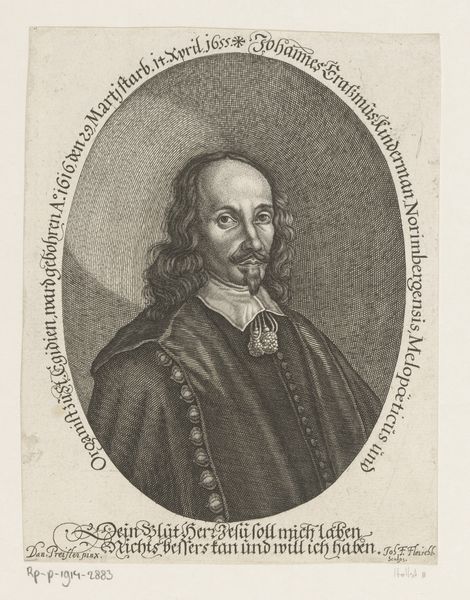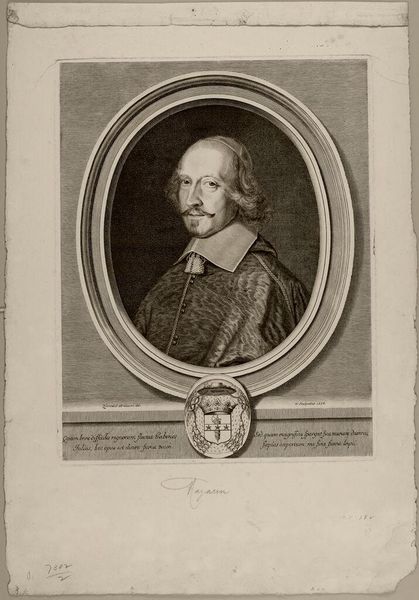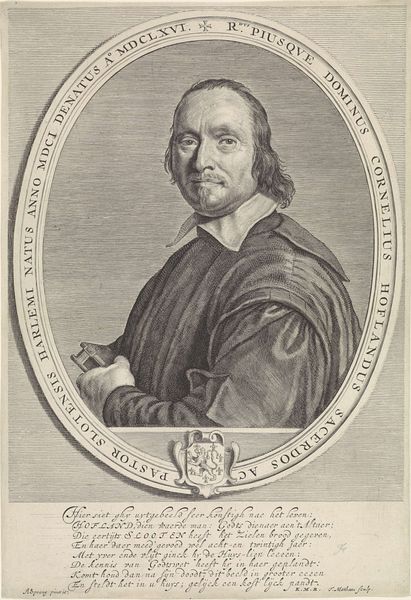
print, etching
#
narrative-art
#
baroque
# print
#
etching
#
figuration
#
history-painting
#
academic-art
#
italian-renaissance
Dimensions: 5 9/16 x 4 5/16 in. (14.13 x 10.95 cm) (plate)
Copyright: Public Domain
Curator: Standing before us is "Portrait of Thomas Stilianus Appules," an etching by Ottavio Leoni, dating back to 1625. It's currently held here at the Minneapolis Institute of Art. Editor: It's fascinating; the sitter's intense gaze, framed within that oval border, conveys such a palpable sense of authority. It reminds me a little of those stoic Roman busts. Curator: Leoni, a prominent figure in early Baroque Rome, often captured portraits of notable personalities. His portraits, especially these etched prints, circulated among the intelligentsia, reinforcing networks of power and influence. Editor: Absolutely. Look at the details—the precisely rendered mustache and the insignia he wears. These were clearly important visual markers of his identity and status, signaling perhaps his membership in a knightly order. Curator: Indeed. The medium, etching, allowed for multiple reproductions, making the image accessible to a wider audience, thereby cementing Appules' image and Leoni’s skill as a portraitist within the artistic landscape. It was a savvy way of building social capital for everyone involved. Editor: I wonder what significance Appules held at the time? His very inclusion in this visual record indicates that he probably possessed some type of status, which now is a bit forgotten. It makes you wonder about the stories hidden behind the faces of so many other historical portraits like this. Curator: Leoni strategically engaged with sitters like Appules, elevating both their societal position and affirming his role within those circles. These images shaped historical memory, influencing how people perceived not just Appules, but the values he supposedly represented. Editor: And, even now, staring back across almost 400 years, the image is a compelling statement of presence and identity. It makes you reflect on which emblems and visual markers we deploy now and how we read visual clues about identity. Curator: Exactly. By delving into this portrait, we uncover threads connecting art, patronage, and the careful cultivation of reputations within the bustling social networks of 17th-century Rome. Editor: It leaves you contemplating on not just the person in the image but all those power relations, artistic exchanges, and echoes that resonate across time to reach our very own image-driven present.
Comments
No comments
Be the first to comment and join the conversation on the ultimate creative platform.
